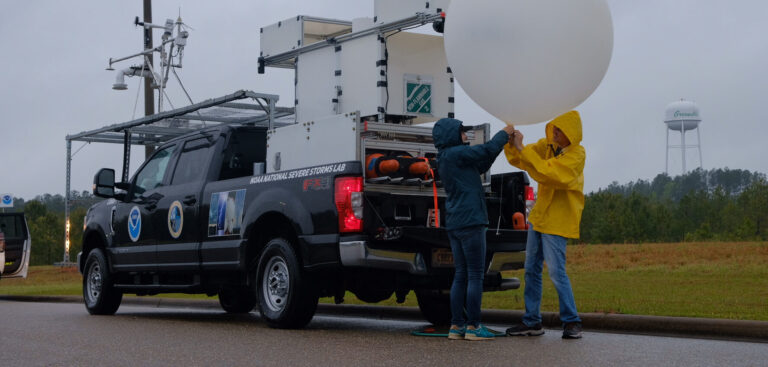A campaign funded by the US National Science Foundation (NSF) and NOAA has begun deploying dozens of instruments to measure the atmosphere near and inside storms.
The Propagation, Evolution and Rotation in Linear Storms (PERiLS) project will take place across seven states with the aim of better understanding tornadoes in the southeastern USA. It is the second year that the program has been launched and is one of the largest and most comprehensive severe storm field projects in the USA to date.
Researchers will focus on quasi-linear convective systems (squall lines) that produce tornadoes. They will gather data from February 8-May 8, 2023, in predefined areas from the Missouri Bootheel southward to the Gulf Coast, and from the mid-and lower-Mississippi Valley eastward to the foothills of the Appalachian Mountains.
Karen Kosiba, NSF principal investigator and managing director of the University of Illinois Urbana-Champaign’s Flexible Array of Radars and Mesonets Facility, said, “The rapid evolution of storms in the southeast poses a unique challenge for researchers and forecasters. PERiLS scientists hope to learn more about the complex ways in which these tornadoes form. If we can learn how, why, when and where they will form, then we can make better predictions, more precise and longer-lead time warnings and save lives.”
The project involves the coordination of 30 teams in the field using a variety of equipment including mobile radars, uncrewed aerial systems, trucks with instruments attached and different kinds of portable devices designed to measure lightning and the atmosphere within and around storms.
“We are collecting an unprecedented data set to better understand tornadic storms in the Southeast, the environments in which they form and the damage they leave behind,” said Anthony Lyza, PERiLS coordinating scientist and postdoctoral research associate with NOAA’s Cooperative Institute for Severe and High-Impact Weather Research and Operations (CIWRO) at the University of Oklahoma.
The researchers will have additional help from about 55 NOAA National Weather Service (NWS) meteorologists who will join them in the field, gathering data ahead of storms and assisting with damage surveys after the storms. In addition, several NWS forecast offices will launch supplemental weather balloons as needed to support the project.
NWS forecasters in the region will have access to the experimental data collected by the scientists to use in real-time. Brian Carcione, chief of the Science and Training Branch at NOAA’s NWS Southern Region Headquarters, said, “Severe storms in the Southeast typically develop and change quickly. Access to additional radar and atmospheric data from the PERiLS campaign will be valuable to our forecasters when developing a forecast and issuing life-saving warnings.”



